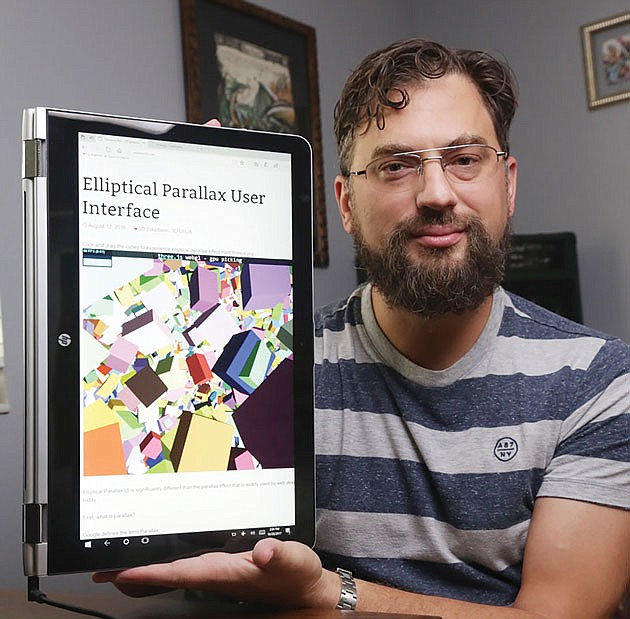- November 24, 2024
-
-
Loading

Loading

By John Haughey | Contributing Writer
Corey Stevens is a puppeteer, ballet dancer, restaurant manager, construction equipment salesman, online marketing consultant, software designer and home inspector who runs a vacation rentals business in Lakeland.
Most of all, though, he invents things.
“I have 100 original ideas at a time,” he says. “I'm always inventing things.”
Inventing things, he acknowledges, is not the same as being an inventor. “The transition from inventing something to monetizing it — that's something I have not mastered,” he says.
But now Stevens may be on the cusp of mastering that transition, after a 3-D software innovation he designed attracted a collaborator with promotion expertise — which would not have happened had he not failed to secure grant money needed to patent another invention that, he admits, “was not a success story.”
That so-far bust, the Tab Grab Strap, seemed liked a good idea when Stevens invented it in his garage: A shoulder brace that provides adjustable support for hands-free access to tablets and other devices. “You see gamers using their tablets, hunched over, their heads down. From my training as a ballet dancer, I know that's bad for posture,” Stevens says.
Two years ago, he fabricated three prototypes from cardboard and papier-mache. Stevens' plan was to mass produce the products with molded thermoplastics and, using his experience as a digital marketing consultant, sell them online. Two obstacles stymied the plan. “I saw this as an ergonomic accessory, but couldn't say that” without validation from medical professionals, which required certification he couldn't afford. He ended up calling it a gaming accessory.
Stevens also needed between $5,000 and $10,000 to secure a do-it-yourself patent. Says Stevens: “It's prohibitively expensive to patent something.”
He presented the Tab Grab Strap during a 2016 “Pitch Night” at Lakeland's Catapult, an entrepreneurial incubator, where he sought a $10,000 launch grant. He didn't get the funds. But after his presentation, he met Linda Bagley Wiggs of Lakeland-based BagleyWiggs CoLab, a promotional products collaborator.
Bagley Wiggs liked Stevens' energy. “He's very enthusiastic about ideas and open to possibilities,” says Bagley Wiggs. “He's a very interesting person — energetic, optimistic.”
Stevens shared with Bagley Wiggs another idea: 3-D virtual product display software that can enhance the online retail experience. Right now, he says, many big-ticket manufacturers — such as automakers — feature 3-D simulators on websites that allow prospective buyers to change colors, add or remove features, view different models from all angles to order exactly what they want.
But as 3-D scanners and software technology become less expensive, Stevens predicts there will be a shift, where this technology will become available to small businesses, not just big companies. With support from Bagley Wiggs, Stevens aims to capture that market and sell the software to businesses. His website, Stevens3D.com, presents two types of software: One displays an existing product, the other allows users to personalize a product.
“The thing that makes it different is it is interactive,” Stevens says. “Virtual reality is the hot thing for technology entrepreneurs. A lot of people are trying to do it, but it hasn't caught on in mainstream commercial use.”
The software is drawing interest for its wholesale applications as well. “This really could get going,” Bagley Wiggs adds.
Manufacturers must often produce one-of-a-kind sample products, say a hat with a specific company logo on it, when selling to prospective buyers. “This particular idea would be helpful for industry” in providing the ability to present a “virtual proof” that would save money and be “great because it can be moved around, and they can see what the whole item will look like with their logo on it,” she says.
Meanwhile, Stevens hasn't given up on the Tab Grab Strap. A Japanese manufacturer now makes a similar device, shaped like a swan. “If I could've figured out how to get them to the market before the Pokemon Go craze, I could've sold thousands,” he says. “I could still do it. The potential is still there.”